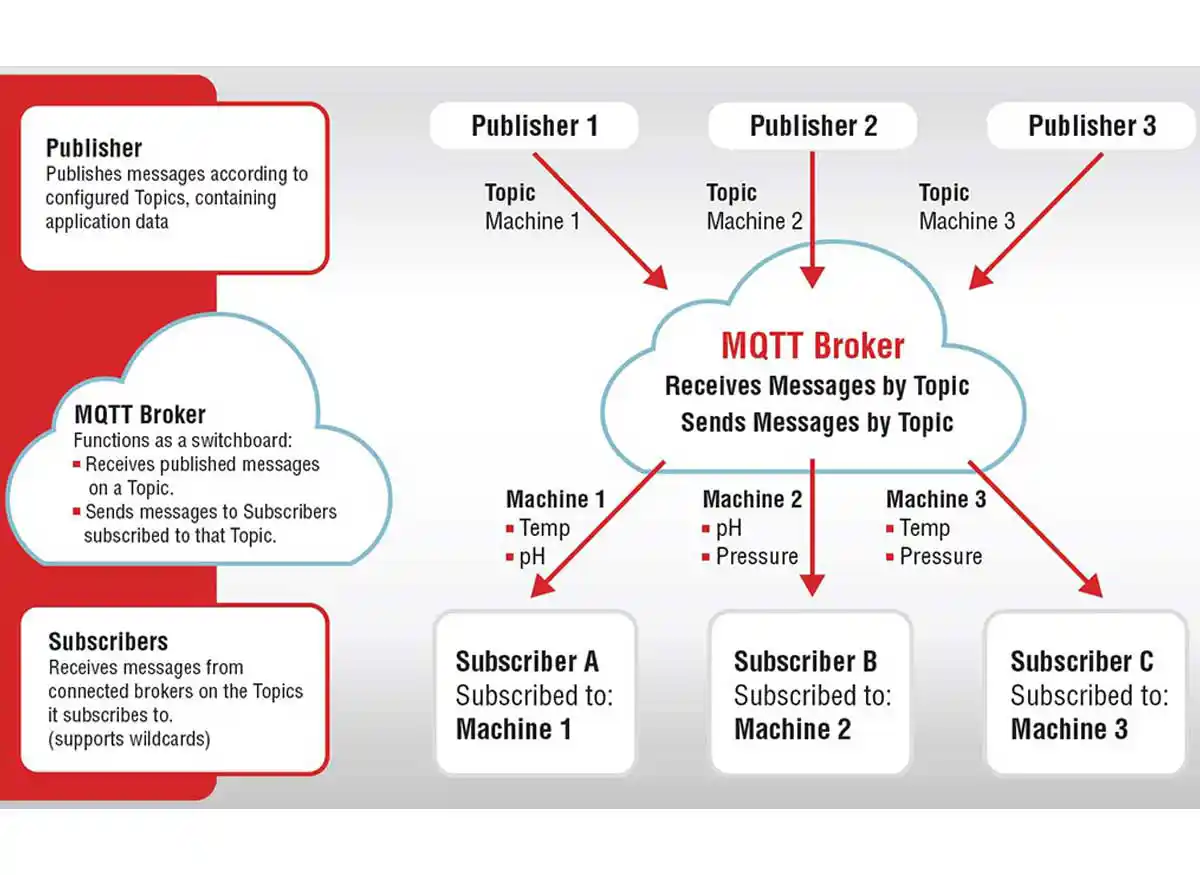MQTT
Message Queuing Telemetry Transport
MQTT is a the leading TCP/IP machine-to-machine/IoT communication protocol for Industry 4.0 that provides data exchange within a network of devices. It is a lightweight, open source publish/subscribe communication model with a fast response time. Getting up and running with MQTT is quick and easy. It is a good choice for small-sized devices with low power consumption. Its minimum overhead ensures smooth data transfer with low bandwidth.
Publish/subscribe communication method
Thanks to the lightweight Publish/subscribe method MQTT is interesting for use in mobile applications, where energy-efficient and reliable data transfer is key. Publish/subscribe is an alternative to the traditional HTTP client-server model, where the client communicates directly with the endpoint.
The difference is that in the publish/subscribe model, the client does not extract data from the server, but he receives the messages relevant to the topic he’s subscribed to from the server. A reliable TCP connection is required for communication. If this is interrupted, the server can store the data in a data buffer and send it to clients when the connection is re-established.
Event driven data transfer
The central communication point is the so-called MQTT broker, which communicates with the clients (publishers and subscribers) via an internet connection or a local network. A publisher creates messages and publishes them to a certain topic.
The data transfer is event-driven, which means that data is transmitted when change occurs (or at time intervals). A subscriber receives the messages relevant to the topic it is subscribed to.
As a standard practice, topics should follow a hierarchy which allows for logical grouping/arrangement for a network of sensors.
Read the latest Networking news
Cloud IIoT platform Unitronics UniCloud – enter the world of IIoT!
The UniCloud cloud IIoT platform is a free, scalable and secure solution. Set it up in less than 30 minutes and increase efficiency.
Teltonika – your key to the Internet of Things (IoT)
Teltonika offers you routers, modems, gateways and IoT platforms for automation. Let them make your life easier!
Data Collection Module, Secomea
Use the DCM not only to collect data from your devices connected to the SiteManager, but to process it, optimize it, and store it in the IoT cloud!
Support Arm Systems and Control Panels by Teknokol
Protect your industrial computers and HMIs from a harsh environment and unauthorized access with support arm systems and control panels.
excom: The I/O solution for all Ex zones – for all markets
Transfer process information and meta data from the field to IT systems with Turck's excom Ethernet gateway, approved for zone 2 Ex areas.
Remote maintenance in industry
Benefit from the remote maintenance for access, active control and management of the devices to ensure more efficient industrial operation.
Subscribe to our newsletter!














